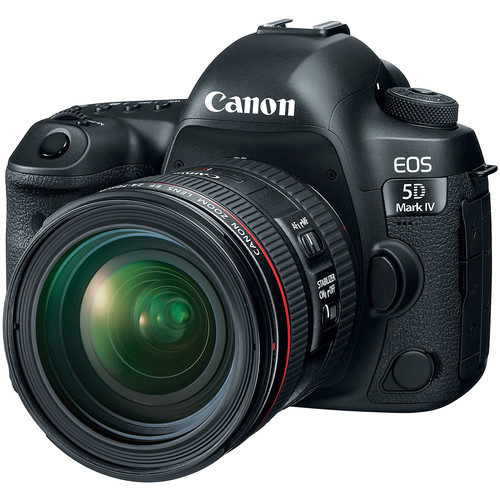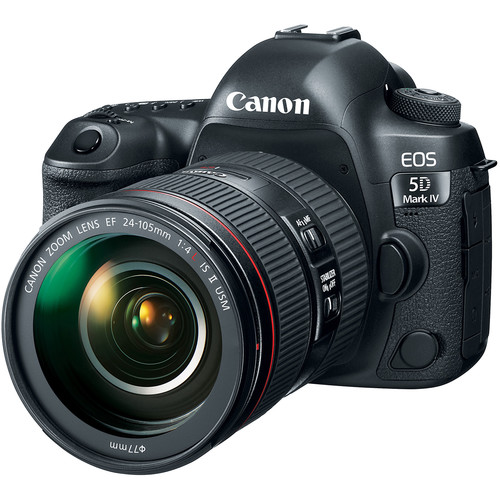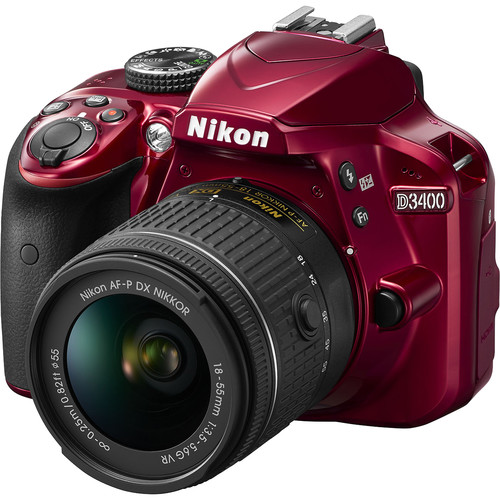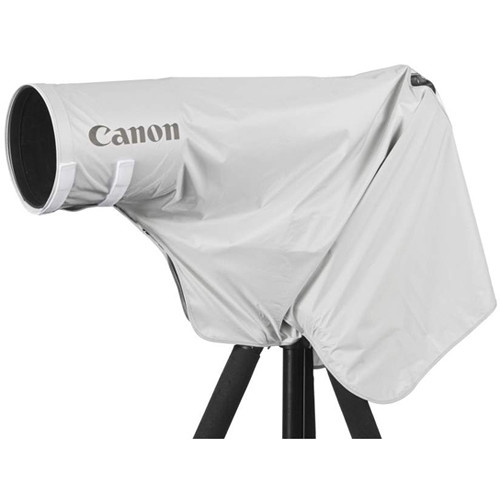I'll admit that I was pretty disappointed when I heard that Canon was trying to push even more megapixels (30.4 or 6720 x 4480 - > 8k video) into the 5D Mark IV as that's not what users of this camera body needed. They needed better dynamic range and high ISO performance, not fewer pictures fitting on a memory card and concerns about blurry shots from a high megapixel camera. After all, the 5D series is the camera of choice for many event photographers (which I bundle as wedding, general events, and concert).
We have seen with the poor 7D and 70D that when you try too hard to win the megapixel marketing game that you end up with terrible image quality and poor high ISO performance with nothing really to show for it in return. We've also seen with the D800 and D810 that extra megapixels can also mean a greater chance of getting a blurry image from motion shake, so fearing the worst I ordered my 5D Mark IV with the 24-70 f/4L IS lens and the new 600EX-RT II flash.
Behold, this isn't a normal Canon
If you've followed my blog then you know that I often do shots in a cathedral not to push a religious agenda, but instead to test a camera in some very tough conditions. The shot below is one of my torture tests because to the human eye pretty much most of the ceiling appears black and to most cameras all but the highlights are lost. However, I hadn't seen results this good since the A7R II (image comparison) and the D750 (image comparison) so this camera got my attention.

f/5.6 @ 24mm for 1/125 sec at ISO 25600
I expected shots at this high ISO to suck, not rock like this
What's interesting here is that you can see all the way to the ceiling and the color tones are well preserved. This camera was supposed to suck at high ISO and because it's a Canon, it was supposed to be inferior to Nikon and Sony in terms of dynamic range (if you believe DxO). However, what do my wondering eyes should appear - something truly amazing! Is it a miracle?
So without reading further, it was at this point that I realized that this camera didn't suck. In fact, it got my attention that it might actually be quite good! However, would my frustrations with Canon that once had me thinking of switching camps be resolved? Read on to find out.
Body Thoughts
No, not my flabby body - the 5D Mark IV. In generally if you've used the 5D Mark III, 5Ds or 5DsR then you pretty much know what to expect here. Yes, there been some subtle changes, but beyond the higher resolution touch screen display and USB 3 instead of USB 2 port it didn't feel especially different in every day use.
On the geek side you end up with better burst mode performance, better video resolution 4k, alledgely better battery life with the same battery, built-in wifi (with FTP support) and GPS, dual pixel RAW AF (requires DPP),
In practice I just found it to have very good AF performance and when paired with the 24-70 f/4L IS lens I didn't have the need to over compensate on shutter speeds to get a sharp shot. Even if I did, they've finally added my favorite feature from Sony whereby you can specify a multiplier for the "auto" settings whereby Aperture priority will favor faster shutter speeds than what its traditional calculations would use. This is especially helpful for event photographers who deal with moving subjects in poor light.
In fact, during my review I found myself so pleased with the 5D Mark IV that I ended up not using the 600EX-RT II at all!
In the Studio

f/7.1 @ 200mm for 1/200 sec at ISO 100
Here's where you'll love the extra megapixels
In the studio the extra megapixels translate into more detail in web and small prints so that eyelashes and hair just feel more real. The shots in this article are 100% unedited and straight out of the camera from the in-camera JPEG, yet when you click the photos to see the original you can see this camera creates a impressive file.
Even with some quick mugshot shots, I realized that the improvements in dynamic range and high ISO performance of this camera might mean a worthy upgrade for 5Ds and 5DsR owners even if it meant sacrificing some megapixels. All of the other improvements definitely make it worth it!
Dual Pixel Raw AF Correction
Yes, Canon's Dual Pixel RAW AF Technology works well in DPP
NOTE: This is not the image from above
Being a geek, I had to try out the raw dual pixel feature to see how well I could correct a lens focusing problem. As you can see from the image above, once I apply the AF micro adjustment AFTER the image had originally been shot, I can recover quite a bit of detail that was lost in the original. Click here to learn more about Canon's Dual Pixel RAW AF technology.
Features like this and the anti-flicker technology aren't new to this Canon model, but they are game changers for dealing with age old problems that event photographers face making this yet another reason to buy this camera.
Bookshelf Shots
After 8 years of doing bookshelf shots for this blog, I want to puke whenever I have to do these for a review. However, I like my bookshelf shots a lot more than test charts and fake environments others set up because of the deep shadows and a seeing what happens to all of the books on a different plane from each other.
The following shots are unedited in-camera JPEG's shot on a tripod with mirror lockup, a timer and aperture priority with the 24-70 f/2.8L II at 70mm using Auto White Balance and the eyepiece taped over.
Click the photos to see the full-size originals.

f/5.6 @ 70mm for 6 sec at ISO 100
This is a A7R II caliber image when you look at the blue strip poker spine
While the shoe laces in the blue strip poker book show slightly lesser detail than the 5Ds and 5DsR, it's definitely on par with the A7R II and overall close enough that I probably wouldn't sacrifice the benefits of this camera for the limitations of the higher megapixels Canon's. I'd be annoyed if I bought those cameras and I'd definitely be excited to get my hands on the Mark II version of the 5Ds!
I was also blown away by the detail in the shadows as this better than what my eyes in real life, so at 100 ISO this is going to be an impressive camera for landscape photographers!

f/5.6 @ 70mm for 1/10 sec at ISO 6400
At 6400 ISO I expected things to go bad, and while I wasn't impressed with the Canon in-camera noise reduction, I can say that this image is totally useful for any purpose in my book. Shadow detail is still good and the noise is cleaned up nicely enough while still preserving a lot of the detail.

f/5.6 @ 70mm for 1/40 sec at ISO 25600
Are you kidding me?
In most of the last generation of Canon cameras, 25,600 was an ISO that was there for marketing purposes but nobody in their right mind would actually use it for pretty much anything. Now I found myself saying - heck yeah, I'd use that! Sure I wouldn't want to shoot a birds feathers or bushy tree in the fall with that ISO, but for most real world scenarios - and especially a concert - I'd totally use that file.
After 25,600 things do start to get ugly so I consider this the realistic upper limit of this camera, but it's a very practical upper limit.
Another thing to take note of here is that many social media sites don't take advantage of photos larger than the ones you see above. Can you see a huge difference between the ISO's when the images are scaled down to this size? - No, so if your output is primarily for the web versus prints > letter size - then you shouldn't stress much about ISO - they are all good enough for the web.
Real World Shots
These are all hand-held shots except the outdoors shots with moving water

f/4 @ 50mm for 1/500 sec at ISO 640
I liked how smooth the fog felt in the original even at ISO 640

f/22 @ 70mm for 1/125 sec at ISO 6400
At 100% I'm not impressed, but even full-screen at 4k the detail in the bottom leaf and water droplets was pretty good. I'm still not seeing magic from Canon's diffraction correction for f/22 like I saw on the Fujifilm x100s

f/5.6 @ 70mm for 1/125 sec at ISO 1000
Using macro on the 24-70 f/4L IS brought out a lot detail in this leaf that you can only fully appreciate at 100%

f/5.6 @ 115mm for 1/500 sec at ISO 125 (-1 EV)
The bird was an accident, but I did witness the improvements in the shadows of the 5DM4 that Canon claims has drastically improved

f/9 @ 66mm for 1/250 sec at ISO 160 (-2/3 EV)
Extra megapixels help to preserve a lot detail from this shot even when downsized

f/5.6 @ 59mm for 1/250 sec at ISO 320 (-2/3 EV)
I'm very satisfied with the dynamic range improvements - long overdue for Canon!

f/16 @ 70mm for 1/250 sec at ISO 10000
Improved dynamic range means fewer blown highlights in mixed condition shots like this

f/4 @ 50mm for 1/200 sec at ISO 100
This was a torture test to see just how wide the dynamic range was. The colors were preserved very well, detail in the shadows was better than expected and the highlights blew out about where the highest cameras typically do these days

f/4 @ 70mm for 1/320 sec at ISO 5000
Again the 24-70 f/4L IS macro mode brings out microscopic details of the leaf

f/4 @ 35mm for 1/125 sec at ISO 5000
Another torture test, this is one that blew me away on the D600 so I've made it a part of my regular shots since then. I much preferred this result over the D750 in the highlights and shadows of both the foreground and background. The detail was way better here than the D600 & D610 thanks to extra megapixels

f/7.1 @ 61mm for 1/250 sec at ISO 10000
Another great example of highlights and shadows both doing quite well under tough conditions and high ISO

f/5.6 @ 66mm for 1/250 sec at ISO 4000
I'm not sure any camera I've tested could better, but this was the first time I took this shot and I definitely see room for improvement in the stained glass in the background. This might be my new dynamic range torture test!

f/5.6 @ 70mm for 1/500 sec at ISO 8000
This is an in-camera HDR (vs single frame here) that showed that HDR is still very necessary and with the dynamic range of this camera it can be very impressive and natural - even with in-camera JPEG processing!

f/22 @ 26mm for 0.6 sec at ISO 100
Again, in-camera JPEG diffraction correction didn't seem to make up for lens softness at f/22, but at reasonable print and web size it is good enough to illustrate a wide depth of field

f/22 @ 37mm in-camera HDR at ISO 100 using Landscape Picture Style and Art Vivid mode
Choose your HDR effects carefully as this was pretty nasty but still much better than the base exposure (here)

f/22 @ 70mm for in-camera HDR at ISO 100 using Auto White Balance and Natural mode
Here the colors feel much more normal and the highlights are way better than the non-HDR base exposure (here)

f/5.6 @ 70mm for 1/200 sec at ISO 10000 (handheld in the wind)
Even at f/5.6 with the 24-70 f/4L IS the bokeh is buttery smooth
Click here for a full gallery of images, but please only use them for review purposes while you are reading this article. The photos should not be edited, redistributed, linked or shared in any way without written permission.
Conclusion
My 5D Mark III had grown so long in the tooth that I stopped using it well over a year ago - it had become a dust collector. When the 5Ds and 5DsR came out nothing impressed me enough about them to make the switch, so I held fast to my 1D X and 5D Mark III. With the release of the new Canon pro bodies I sold both cameras. After a comparison of both, I decided that the 1D X Mark II still made the most sense for my needs, but the 5D Mark IV impressed me way more than I expected.
30.4 megapixels with fast processors seems to be a good balance between more resolution and details without the need to have a significant shutter speed multiplier like I needed on the D800 / D810. The A7R II managed to outperform the Nikon too, so I'd put the 5D Mark IV and A7R II on my list of recommendations for people looking for more megapixels without the shutter speed multiplier penalty.
However, what impressed me most about this camera was the excellent high ISO performance that exceeded the 5DsR, 5Ds, D810 and even the A7R II. To my eyes, only the 1D X Mark II and D5 have out performed it, so I feel quite comfortable in saying that my fears about this camera before I had it were unfounded. It seems to be a great choice for event photographers as we as those looking for great quality with high resolution. The improvements in dynamic range also help rest the Nikon envy, so Canon users should rejoice that this is definitely a worthy upgrade.
I highly recommend the 5D Mark IV.
Learn more or buy
Click here to learn more or buy your own 5D Mark IV via B&H.
Other Articles You Might Enjoy
- 1DX Mark II Review - Part I
- 5D Mark IV vs 1D X Mark II Comparison
- Canon 5Ds
- Canon 5DsR
- Canon 6D (vs Canon 5DM3 & D600)
- Canon 7D Mark II
- Canon 8-15mm f/4L Fisheye Zoom
- Canon 11-24mm f/4L
- Canon 16-35mm f/4L vs 16-35mm f/2.8L II
- Canon 24-70 f/2.8L II (vs 24-70 f/4L IS Comparison)
- Canon 70-200mm f/2.8L IS II USM First Look
- Canon 70-300mm f/4-5.6L IS vs 70-300 f/4.5-5.6 DO
- Canon 100-400m f/4.5-5.6L IS II USM (NEW)
- Canon 200-400mm f/4L IS with 1.4X Extender
- Canon 300mm f/2.8L IS II at the Zoo
- Canon PRO-1 Printer (PRO-10 Comparison)
- Nikon D500 with 24-70mm f/2.8 VR & SB-5000
- Nikon D610 (D600 vs Canon)
- Nikon D7200 (and older model links)
- Nikon D750 - Yeah, you want this one!
- Nikon D810 (includes SIGMA 50mm Art & Otus 55mm)
- SIGMA 120-300mm
- SIGMA 24mm Art Series
- SIGMA 35mm Art Series
- SIGMA 50mm f/1.4 Art Series (includes comparisons)
- Sony a6300 - 4k video
- Sony a7 (includes Samyang lens)
- Sony a7R Mark II with 24-70mm
Disclaimer
If you make a purchase using links found in this article, I may make a commission. Thank you so much for supporting this blog by coming back here and using my links when making your purchase!

















